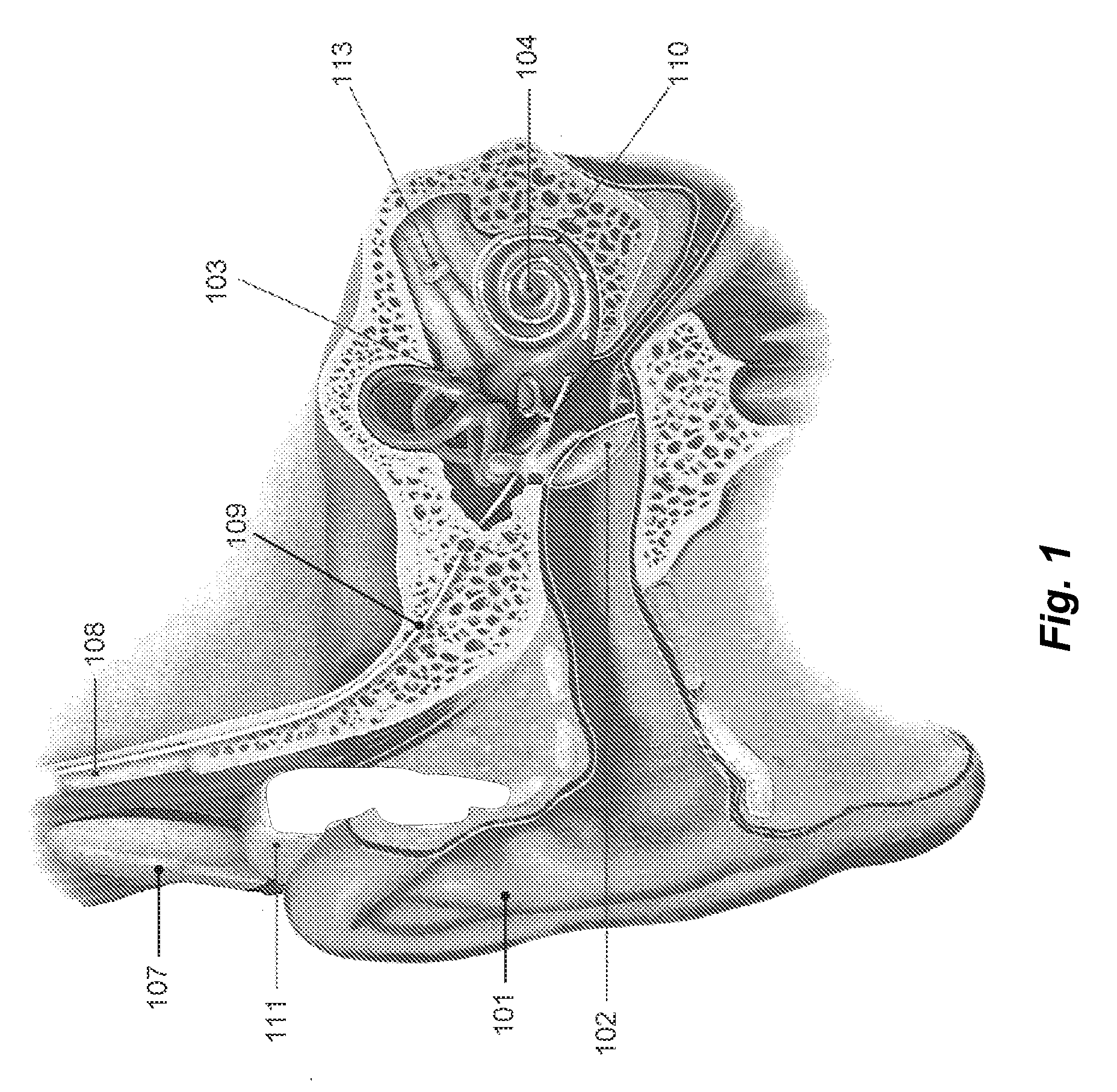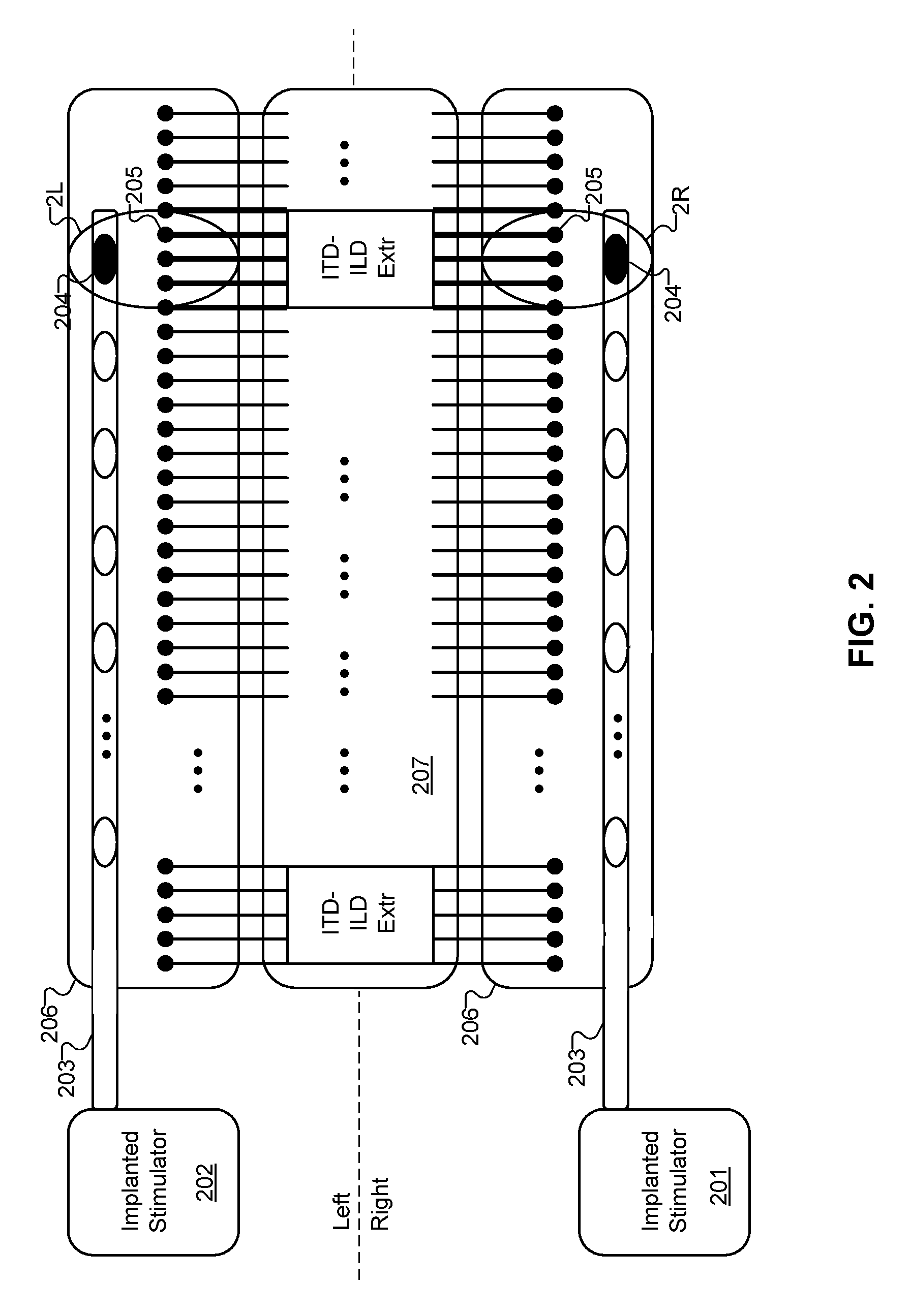Tonotopic Implant Stimulation
a technology of implant stimulation and tonotopic implants, which is applied in the field of cochlear implants, can solve the problems of limited current amplitude, physical electrode positions currently are not generally adapted to patient specific needs, and cannot arbitrarily shorten phase durations,
- Summary
- Abstract
- Description
- Claims
- Application Information
AI Technical Summary
Problems solved by technology
Method used
Image
Examples
Embodiment Construction
[0027]Most existing CI signal processing strategies do not enable bilateral CI users to make use of ITDs to localize sound sources or follow conversations in three dimensional listening environments. However, some existing coding strategies that encode the temporal fine structure of sound signals would seem to have the potential to provide bilateral CI users with appropriate representations of band specific ITDs. Current fine structure coding strategies such as CSSS are usually based on time domain filters, which possess certain group delays that are mainly defined by the center frequency of the associated band pass. Typically, each filter band is associated with a specific electrode contact, but in bilateral CI patients, corresponding electrodes may not necessarily address matched nerve populations. This results in tonotopic and temporal mismatch of bilateral information streams.
[0028]The tonotopic mismatch between filter bank and electrode positions could be resolved in existing C...
PUM
 Login to View More
Login to View More Abstract
Description
Claims
Application Information
 Login to View More
Login to View More - R&D
- Intellectual Property
- Life Sciences
- Materials
- Tech Scout
- Unparalleled Data Quality
- Higher Quality Content
- 60% Fewer Hallucinations
Browse by: Latest US Patents, China's latest patents, Technical Efficacy Thesaurus, Application Domain, Technology Topic, Popular Technical Reports.
© 2025 PatSnap. All rights reserved.Legal|Privacy policy|Modern Slavery Act Transparency Statement|Sitemap|About US| Contact US: help@patsnap.com



